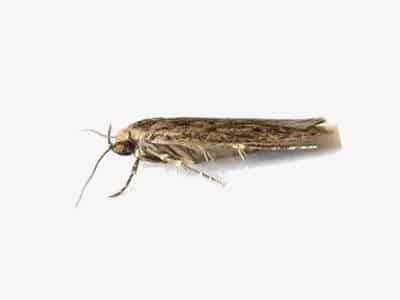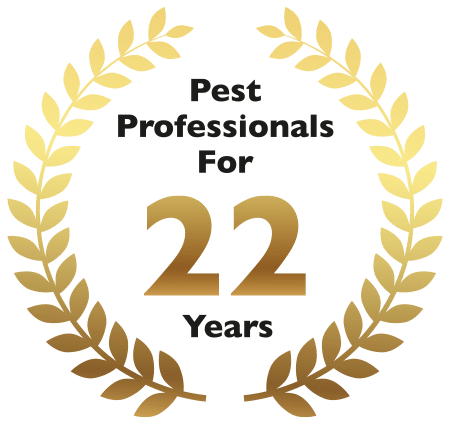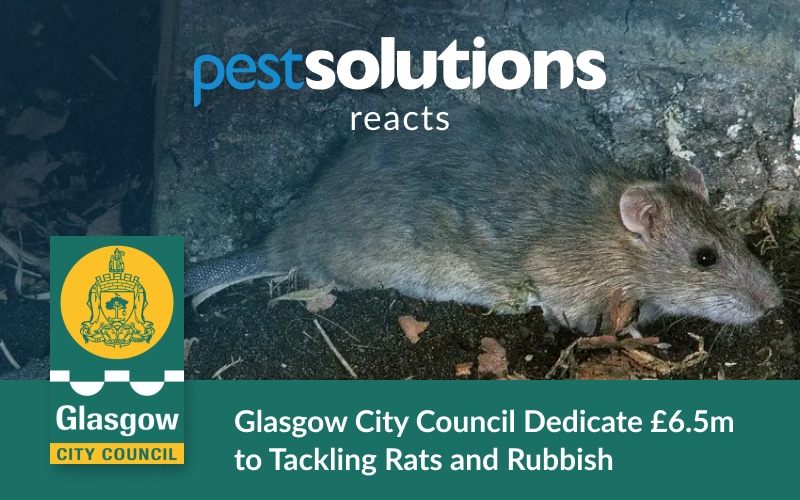About Brown House Moth
The brown house moth (Hofmannophila pseudospretella) is a small moth species commonly found in the UK. It has a distinctive appearance featuring a brownish-grey colouration with pale bands across its wings. The larvae of brown house moths are creamy-white caterpillars with brown heads.
Brown house moths are commonly found infesting homes and businesses. These moths are associated with damage to textiles, however, prefer to feed on dry food products. They are often found in kitchen cupboards, pantries and food storage areas where spilled food is accessible. You may also find them around skirting boards and around cracks and crevices in floorboards where dust, hair and other natural fibres can build up. Infestations can be difficult to control unless the source is located and removed. In severe infestations, multiple sources may be present.
Pest Solutions are here to help with brown house moth problems. Get the details of your local Pest Solutions Branch here or call our national advice line on 0800 027 2555 to arrange a FREE survey or a service visit.
Identifying Brown House Moths
Brown house moths are relatively small insects, with adult moths typically measuring around 18-12mm long with a wingspan of 15-25mm.
Adult moths are brownish-grey with pale bands across their wings, giving them a mottled appearance. These bands are more prominent when the moth is at rest. The wings of brown house moths are narrow, elongated, and are held close to the body when at rest. They have feathery or comb-like antennae, which is a common characteristic of many moth species.
Brown house moth larvae are creamy-white in colour with brown heads. They are typically 10-12 mm long when fully grown. Another identifying characteristic is the silk webbing produced by the larvae. You may find silk cocoons or cases in cracks, crevices, and near food sources, as well as silk webbing in affected areas.
This moth species is typically nocturnal and therefore most active during the night. They are attracted to light sources and may be seen flying around artificial light sources in the evening.
These moths are often found in areas where dry food is stored, such as kitchen pantries, cupboards, basements, and commercial food storage facilities. This moth species is also associated with fur, feathers and natural fibres, so could be indicative of another pest issue such as a bird’s nest or rodent carcass.
Signs of Brown House Moth Infestation
The most obvious sign of a brown house-moth infestation is the presence of adult moths in your home, particularly in areas where stored food is kept.
You may also find traces of larvae. Larvae create silk cocoons or cases in which they reside. These cocoons can be found in cracks, crevices, and near food sources. The larvae can also produce silk webbing as they move around and feed, creating a visible network in infested areas.
If you suspect a brown house moth infestation, look for damage to stored food items like grains, cereals, flour, and pet food. Check cupboards, pantries and pay special attention to wall floor edges, corners and dark, hard to reach places.
Brown House Moth Biology & Lifecycle
The brown house moth undergoes a complete metamorphosis, consisting of four stages: Egg, Larva, Pupa, and Adult.
Brown house moth eggs are tiny, oval-shaped, and translucent. They are typically laid in clusters near or on food sources. The duration of the egg stage can vary depending on factors like temperature and humidity, but it typically lasts for about one to two weeks.
The larvae or caterpillars of brown house moths are creamy-white with brown heads. They have a cylindrical, segmented body shape. This stage is when the larvae are most active and voracious. Larvae feed on a protein-rich diet, feeding on a variety of dry food items such as grains, cereals, flour, and pet food. Larvae will also feed on fur, feathers and other natural fibres in carpets and clothing.
Larvae create silk webbing as they move around and feed, leaving faecal matter behind as they go. This webbing and faecal matter, as well as shed larval casings, can contaminate food and render it unsuitable for human consumption. The duration of the larval stage can range from a few weeks to several months, depending on environmental conditions, meaning the infestation can go on for some time without any adult moths around to be noticed.
After completing larval development, the larvae pupate by creating silk cocoons or cases in which they encase themselves. Here, inside the cocoon, the pupa undergoes a transformation into an adult moth. The pupal stage can last for a few weeks to several months, again depending on environmental conditions.
When the transformation is complete, the adult moth will emerge from the pupal case. Adult moths are primarily focused on reproduction. Mating occurs and females lay eggs, containing the lifecycle and the infestation.
The entire lifecycle of the brown house moth can vary in duration, with factors such as temperature, humidity, and food availability influencing the speed of development. In warmer and more humid conditions, the lifecycle may progress more rapidly, while cooler and drier environments can extend the duration of each stage.
Brown House Moth Behaviour
Brown house moths are typically nocturnal, as such they are most active during the night. They are attracted to light and may be seen flying around light sources. Adult moths do not feed and are focused on reproduction. The larvae, on the other hand, feed on a variety of dry foods and natural fibres.
Brown house moths are a common pest for households and the food industry in the British Isles as they are attracted to stored food items such as grains, cereals, flour, pasta, dried fruit, and pet food. Adult brown house moths may be seen flying around areas where these products are stored indicating that there is an infestation present.
In seeking a protein-rich diet, larvae also feed on fur, feathers and natural fibres. As such you will also find them around skirting boards and open floorboards where dust, hair, detritus and natural fibres can gather. These moths in your property could indicate that there is a bird’s nest in the loft.
Risk of Brown House Moth Infestation
Brown house moths are a significant concern in commercial food storage and processing facilities, including warehouses, grain mills, bakeries, and distribution centres. They can infest large quantities of stored grains, flour, and other dry food products causing damage and contamination.
Brown house moths pose a risk to stored food items as their larvae can contaminate and damage the products. They are more common in areas with high humidity and where food is stored for extended periods without proper sealing. Infestations can lead to food waste and potential health hazards if contaminated food is consumed.
Contaminated food can cause a risk to health if consumed and can have a significant financial impact if large quantities of food have been contaminated and must be disposed of.
Significance of Controlling Brown House Moth
Controlling brown house moth infestations is important for several reasons.
Infested food can become contaminated with moth larvae, their faecal matter, and silk webbing, making it unsafe to consume.
Infestations can lead to the loss of stored food items, resulting in financial losses.
Early control measures can prevent the infestation from spreading and causing more damage. As with most moth infestations, larvae are responsible for causing the most damage and therefore if the adult moths are being spotted frequently, chances are the damage has already occurred and is ongoing.
Controlling Brown House Moth Infestations
An integrated pest management approach is required when dealing with brown house moths. In any case, prevention is better than having to bring an infestation under control. Pheromone traps are good tools for early identification of moth activity.
Food storage areas and containers should be regularly cleaned and inspected to evidence of moth activity. If activity is discovered, affected products should be removed quickly. Affected areas and adjacent areas should be cleaned and checked to make sure there are no life stages of moths present. Food products should be stored in appropriate sealed containers to reduce the risk of ingress by insects.
Insecticide is effective when used correctly and can be considered as a last resort but will not be completely effective unless used as part of an integrated pest management approach also involving good storage and hygiene practices.
Each situation is different. A qualified pest management professional will be able to assess the situation and establish the best course of treatment in each case.
Preventing Brown House Moth Infestations
To prevent infestation by brown house moths, food storage, hygiene practices and environmental factors are important.
Storing high risk foods in suitable, sealed containers will prevent access by pests, which reduces the risk of infestation and contamination. Storing food products at the correct temperature and implementing humidity controls will also reduce the risk of infestation by brown house moths.
Good cleaning practices including regular, detailed deep cleaning of storage containers and storage areas will also aid in preventing infestation by these insects.
Removal of harbourage points i.e. hiding places such as cracks and cervices can also help to prevent brown house moth issues.
DIY Moth Control
At home, if you discover these moths flying around then it often means that there is in infestation present. Check your stored food products for signs of infestation and promptly dispose of contaminated materials. Once this has been done, storage containers and storage areas like cupboards or pantries should be cleaned thoroughly. This can be effective if the infestation is not widespread and has been discovered early enough.
Risk of infestation can be reduced by good hygiene and proper storage of foods in sealed containers.
However, DIY methods may not be as a long-term solution. Brown house moths can be persistent, and DIY approaches may not completely eliminate the infestation.
When arrange Professional Pest Control to Deal with Moths
For larger or persistent infestations, or in commercial settings, professional assistance is often required to bring warehouse moths under control. We deal with clothes moths, carpet moths, pantry moths, white shouldered house moths and more throughout the summer months, so if you are a homeowner with a moth problem of any kind, Pest Solutions are the experts that you need to call.
A qualified pest management professional will use their expertise to select the best tools for the job to bring the infestation under control. A swarm of brown house moths or common house moths can do a huge amount of damage to clothes and food stuffs so fast house brown house moth identification and action is key to halting the larvae’s reign of terror.
Call Pest Solutions to Get Rid of Moths Today!
Pest Solutions have local Branches across Scotland, England, Wales and Northern Ireland. Our expert local techs are at hand to attend today. Call now to get an experienced Pest technician visit and get that Pest problem under control swiftly.
Get the details of your local Pest Solutions Branch here or call our national advice line on 0800 027 2555 to arrange a FREE survey or a service visit.
Find out more about how to get rid of brown house moths



















